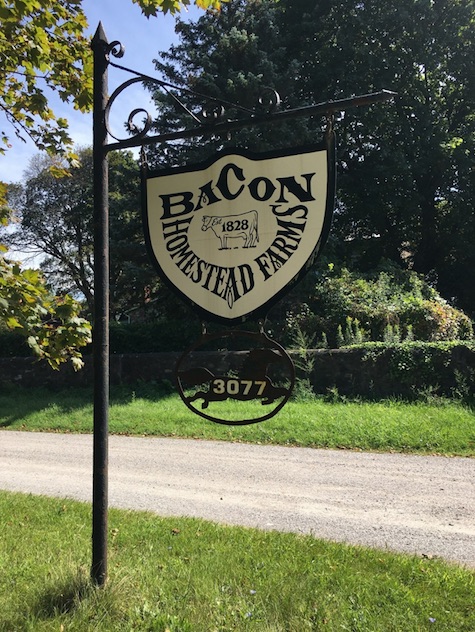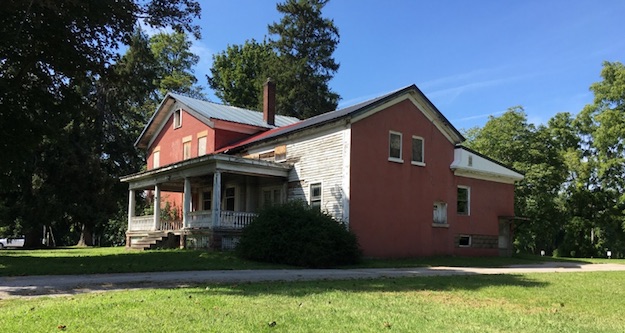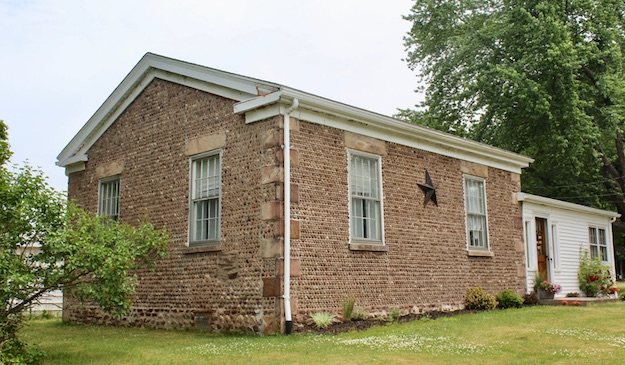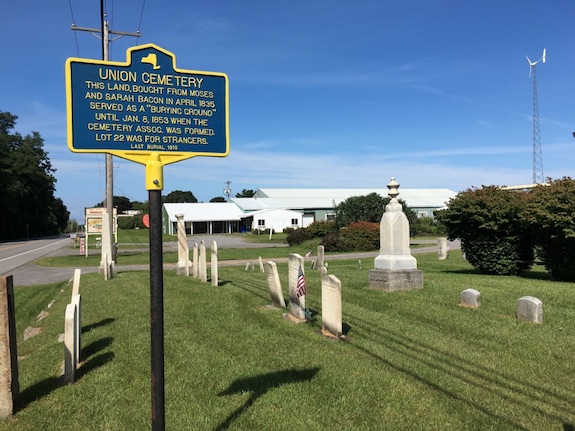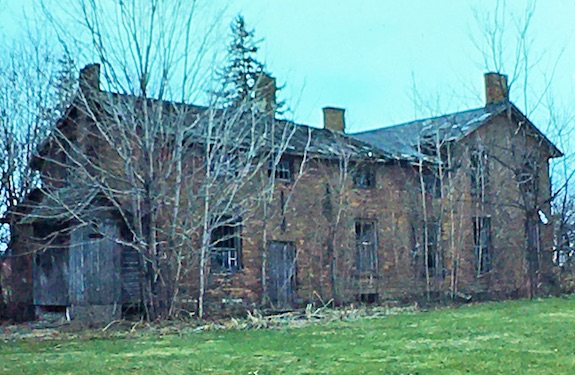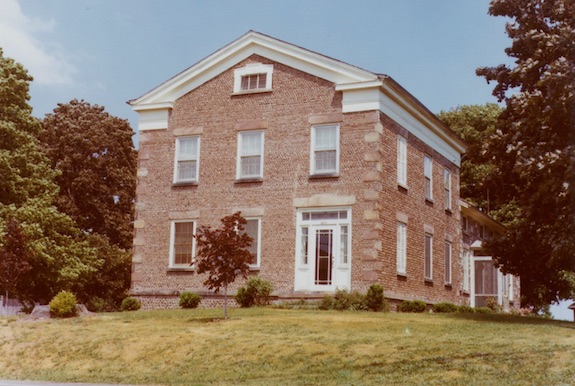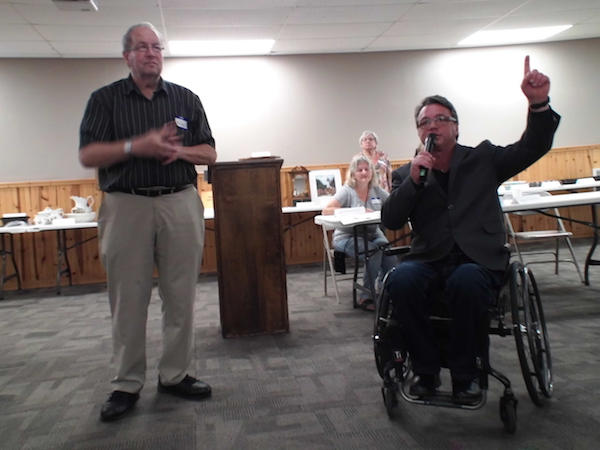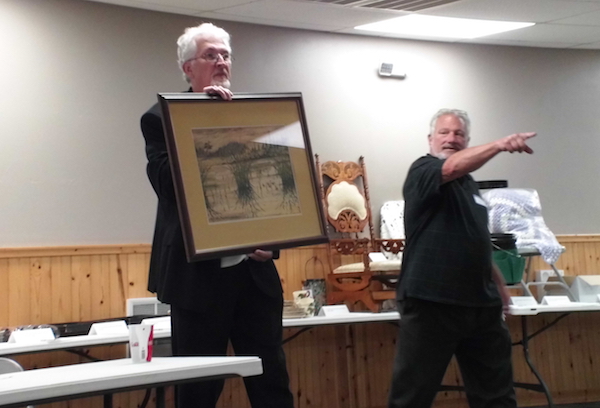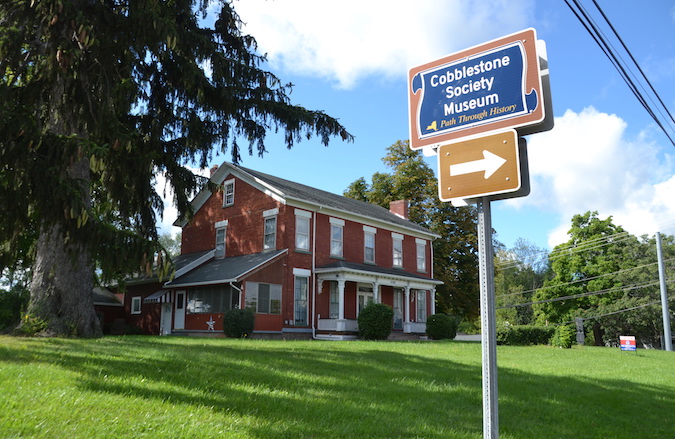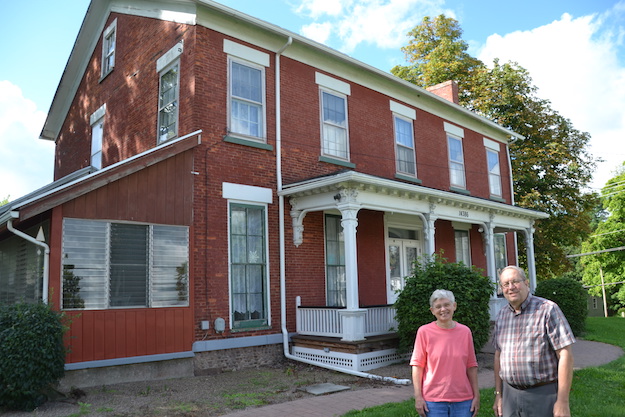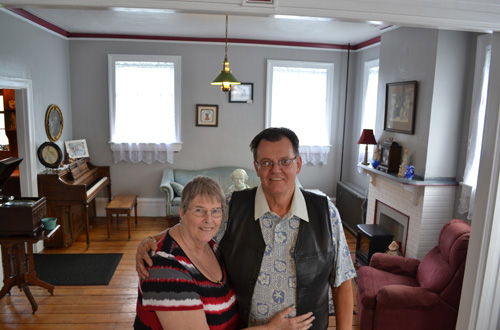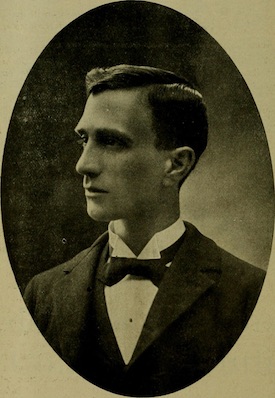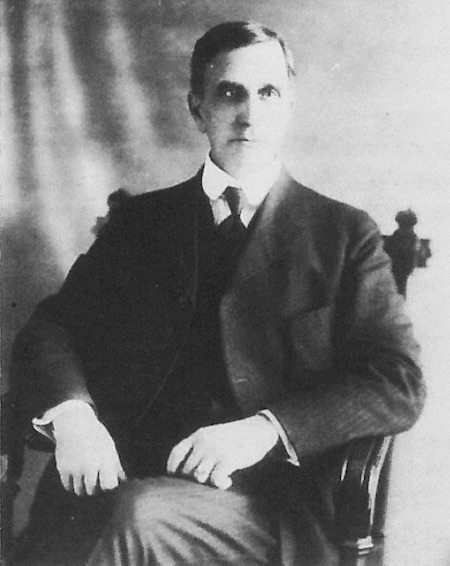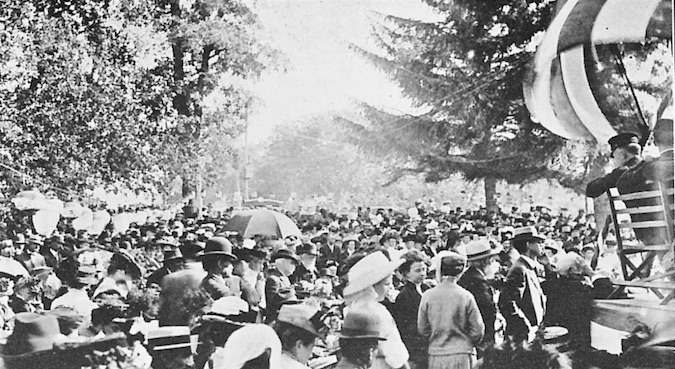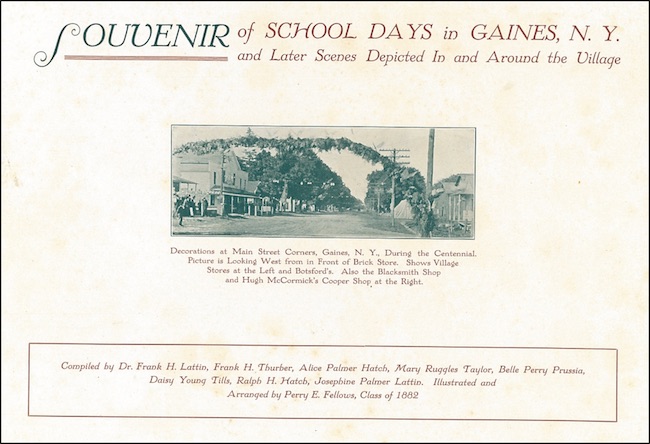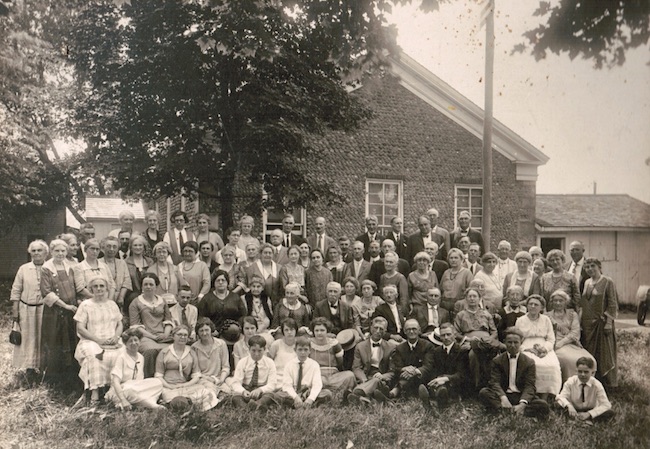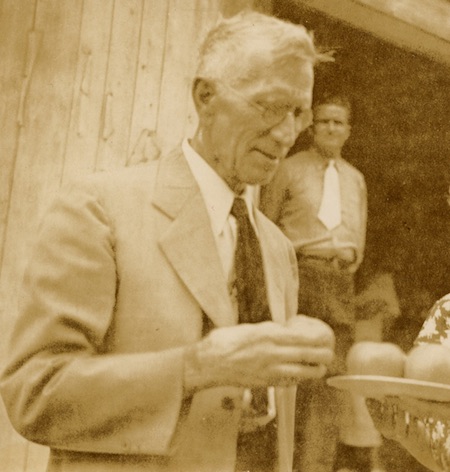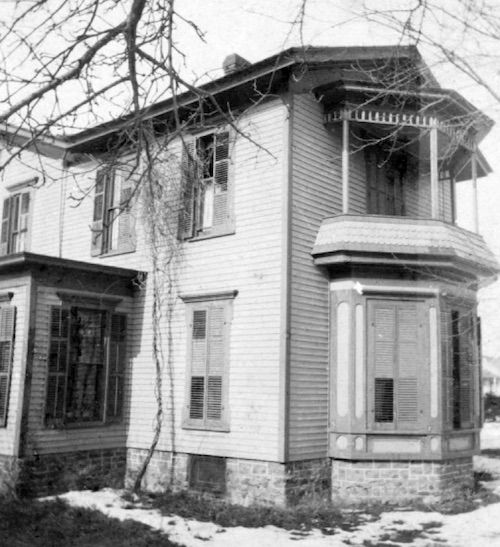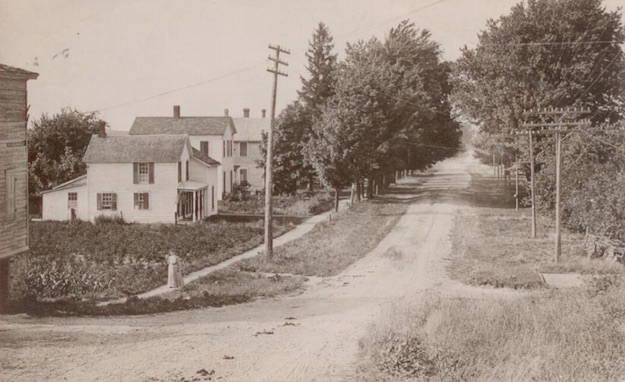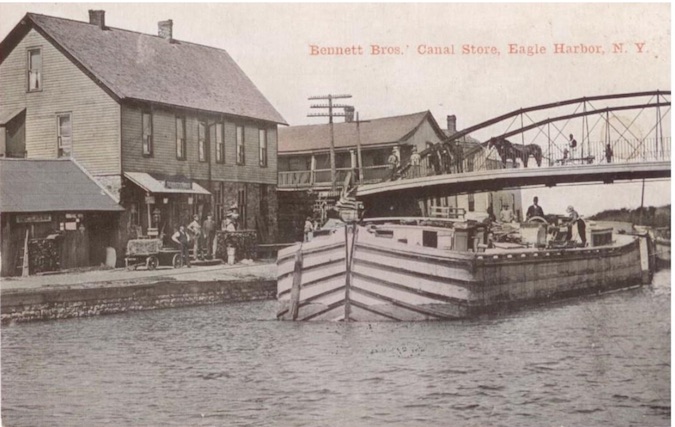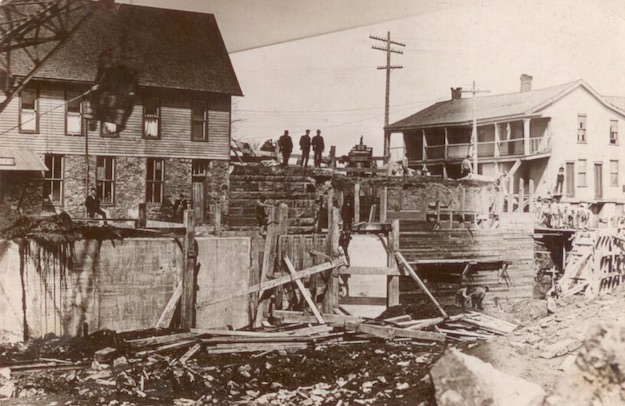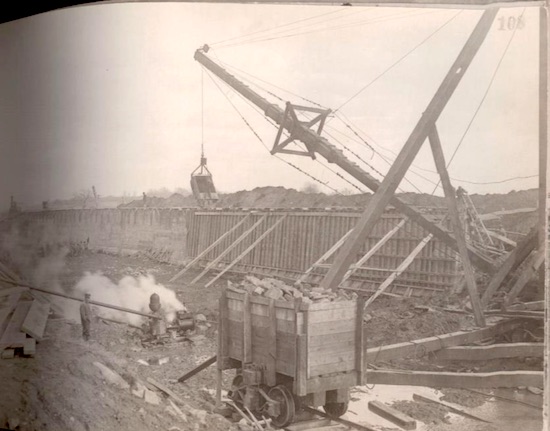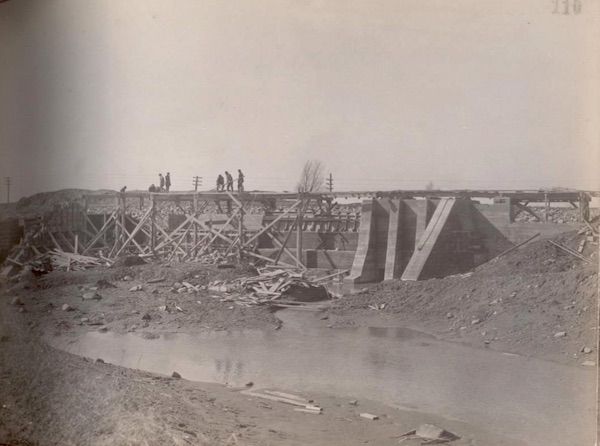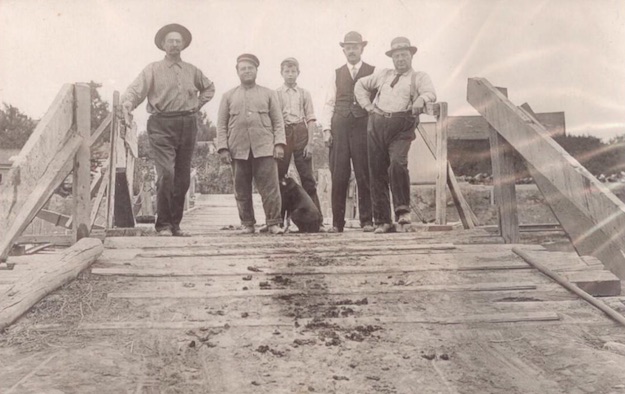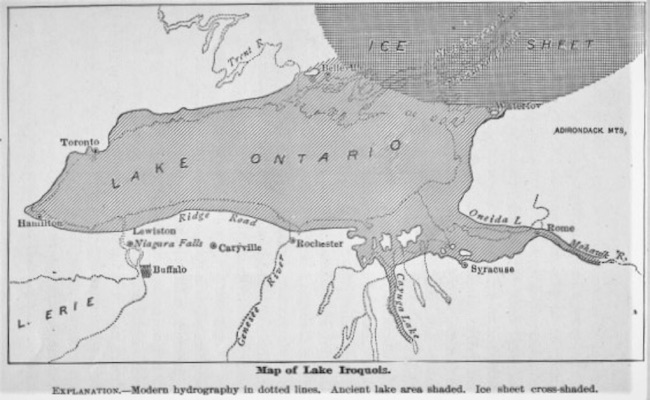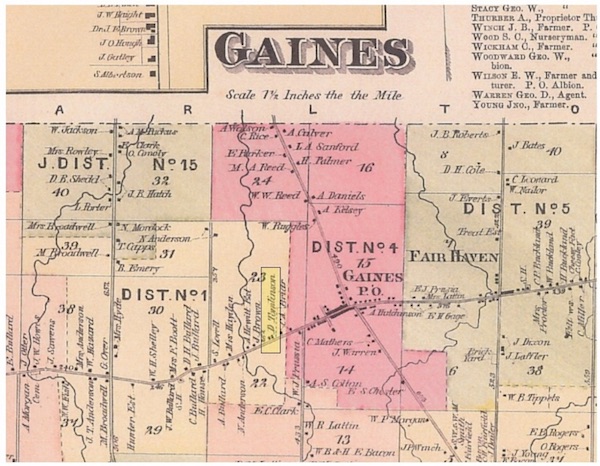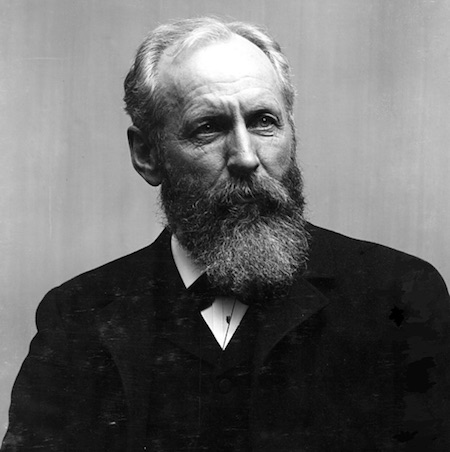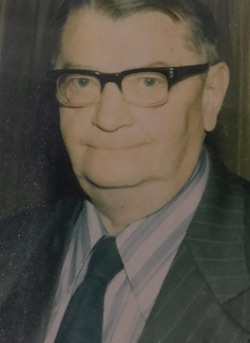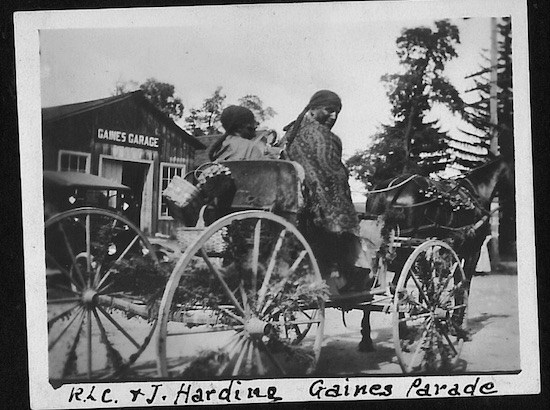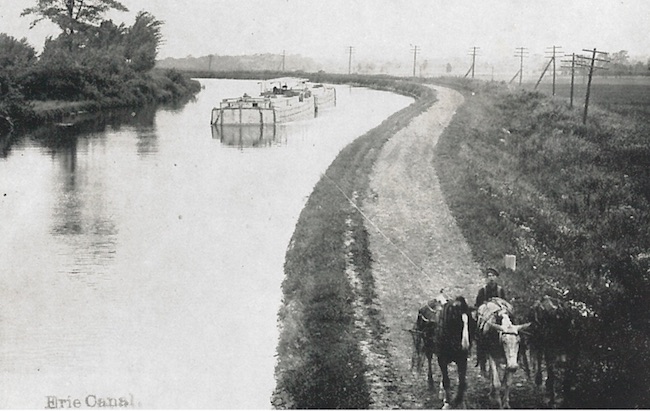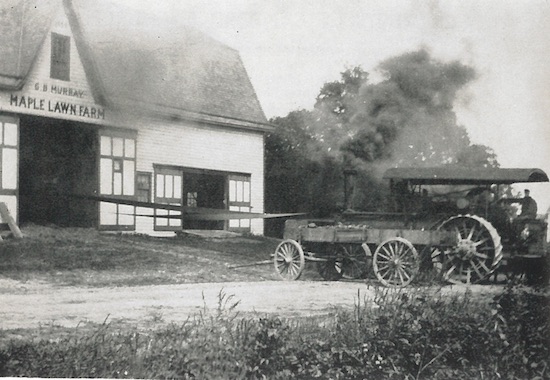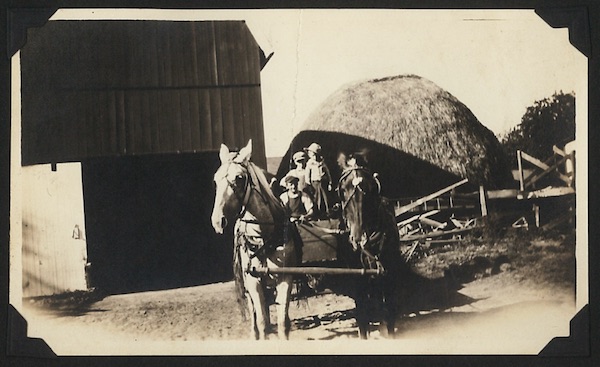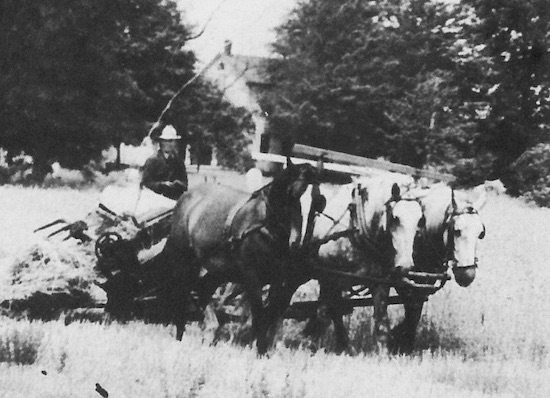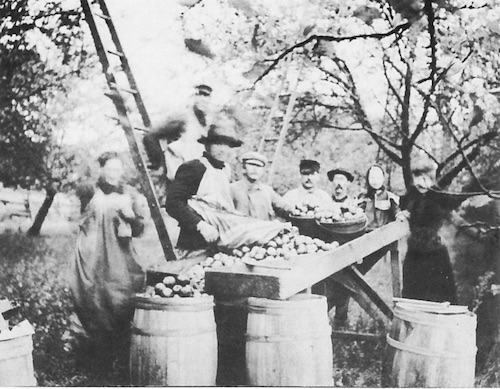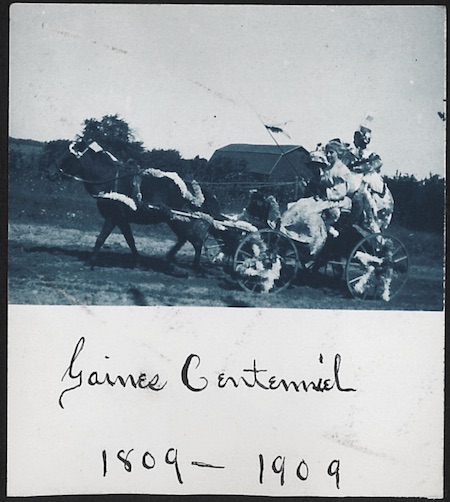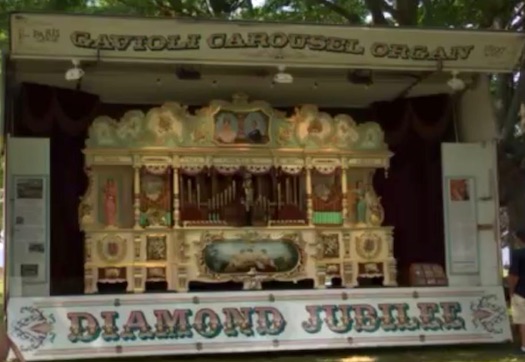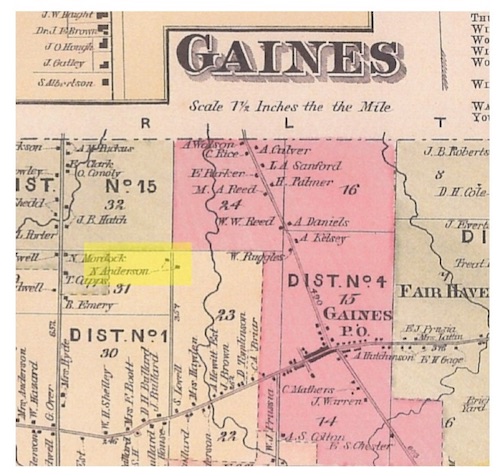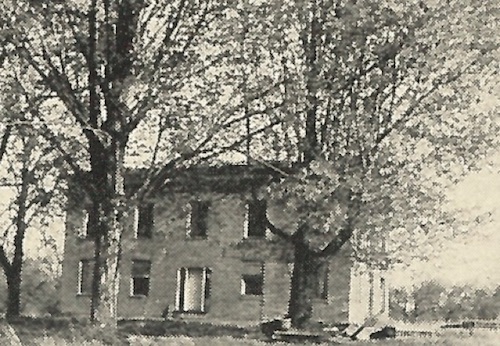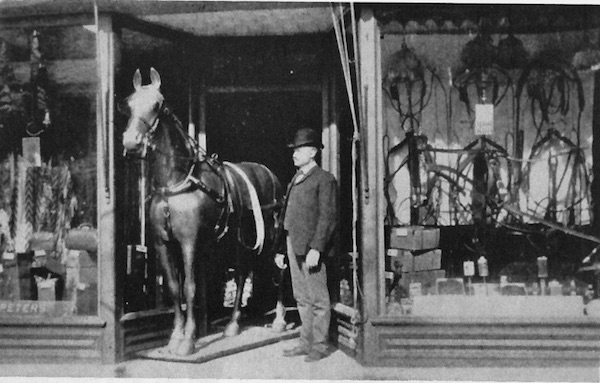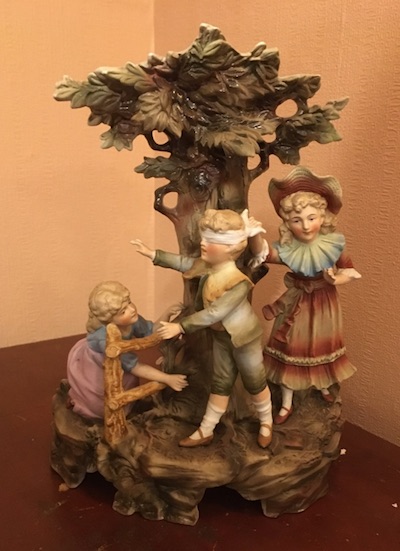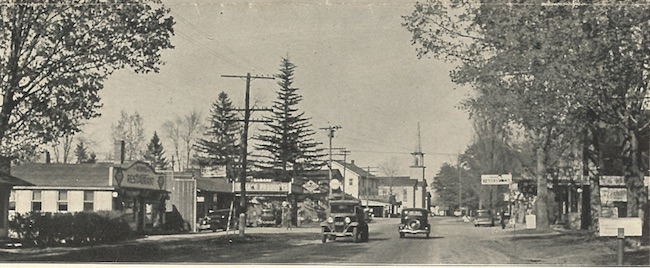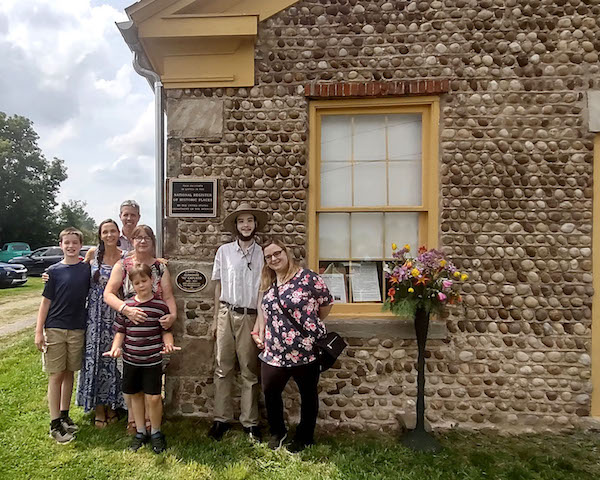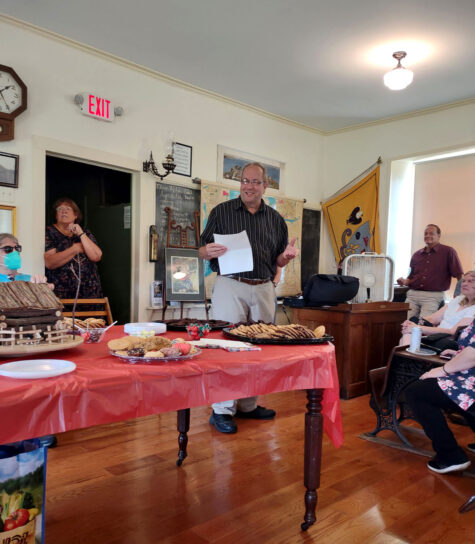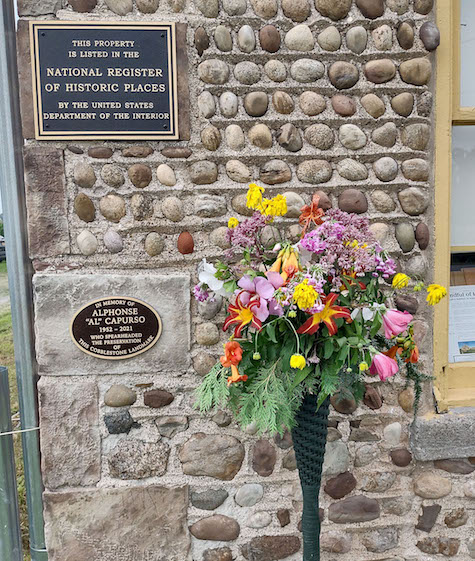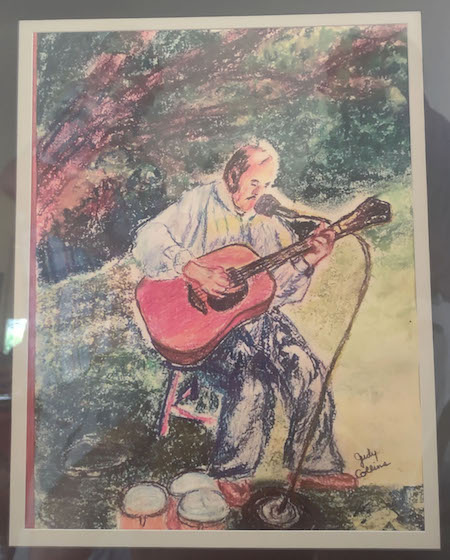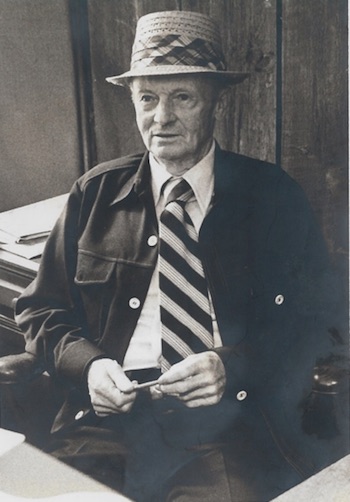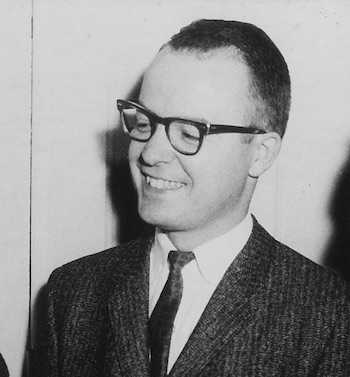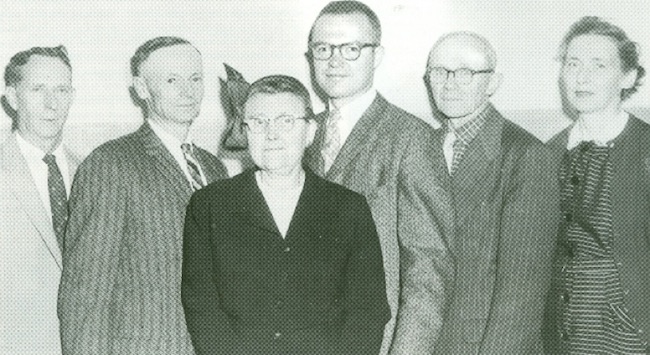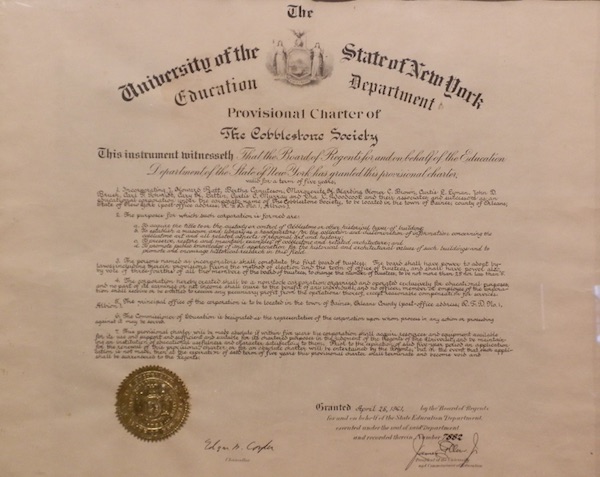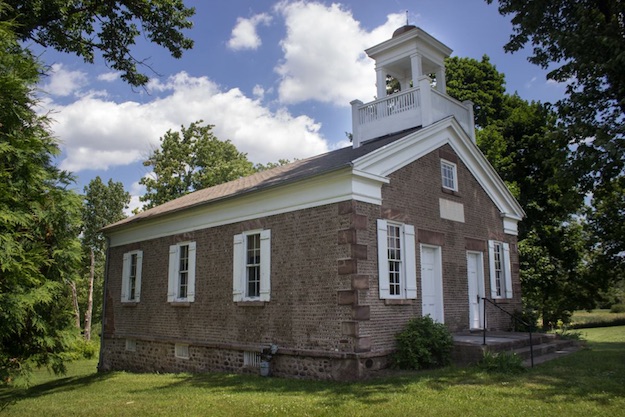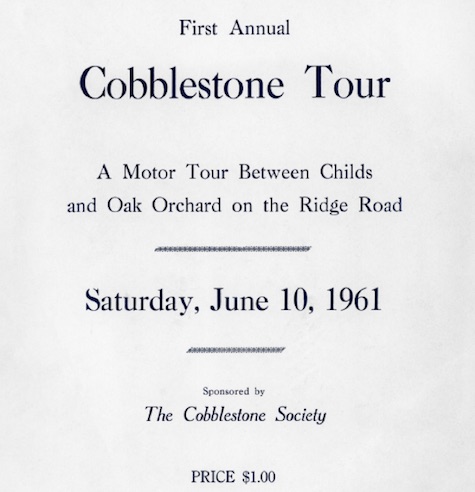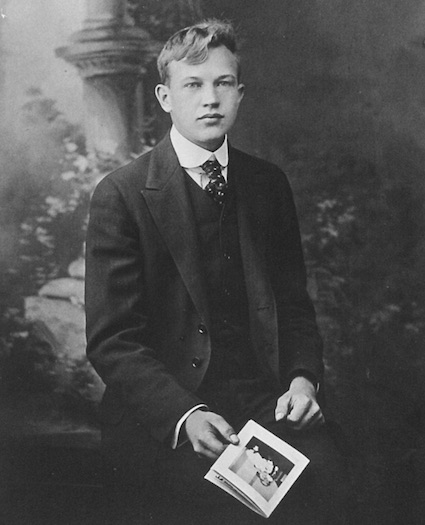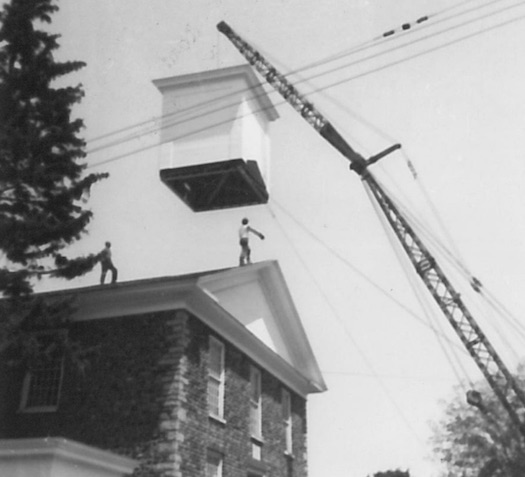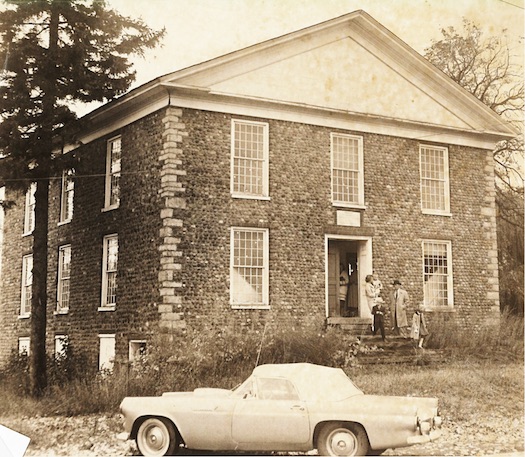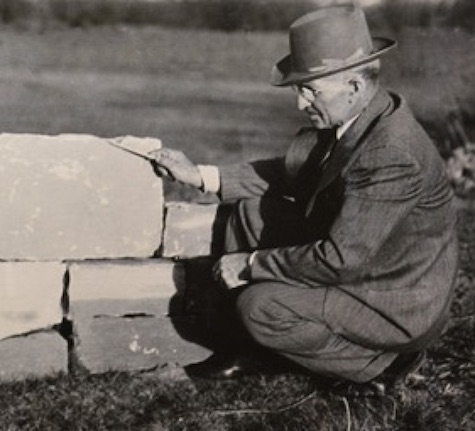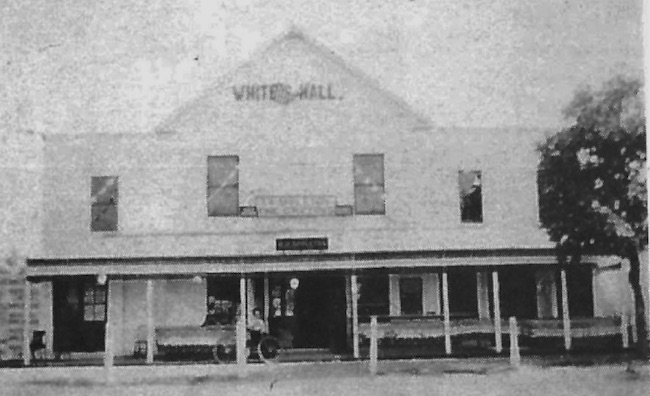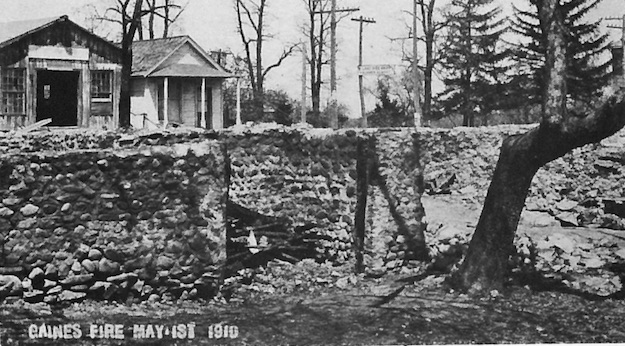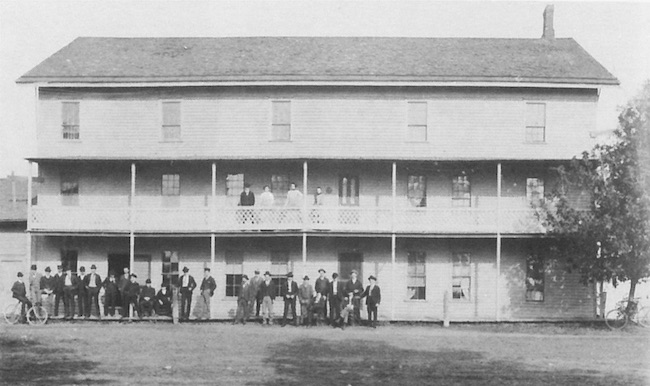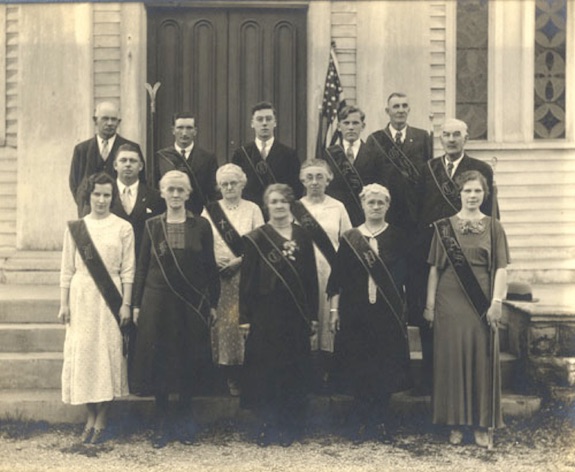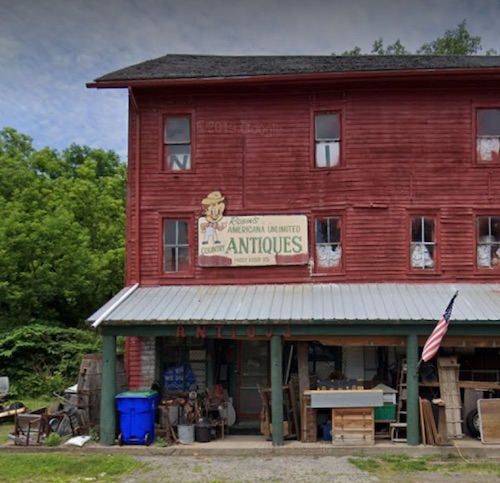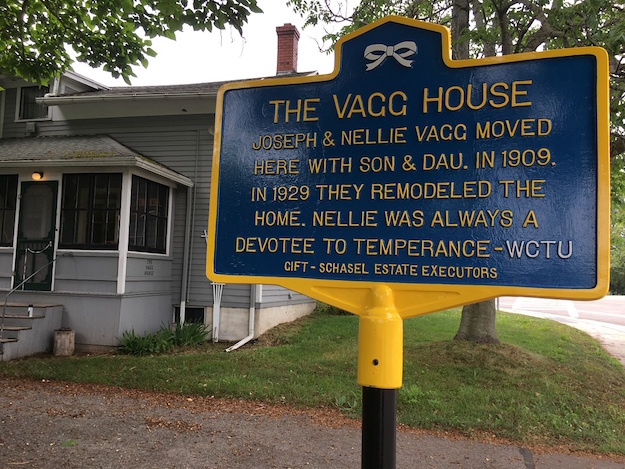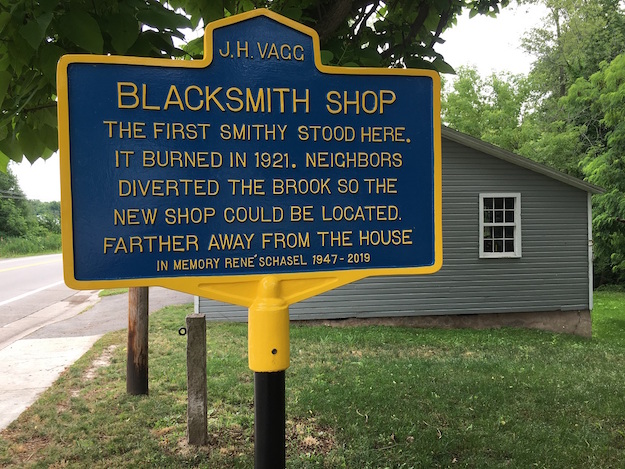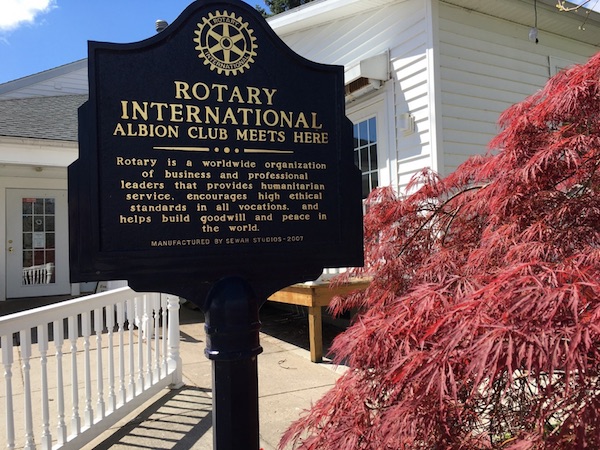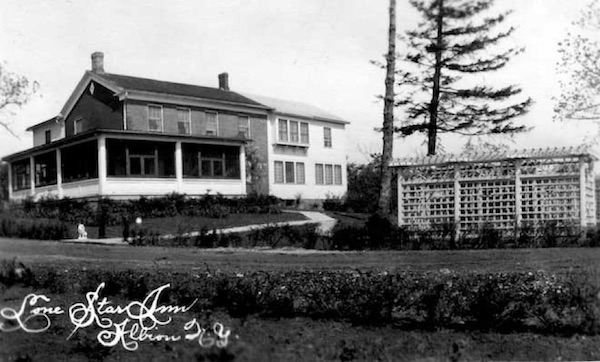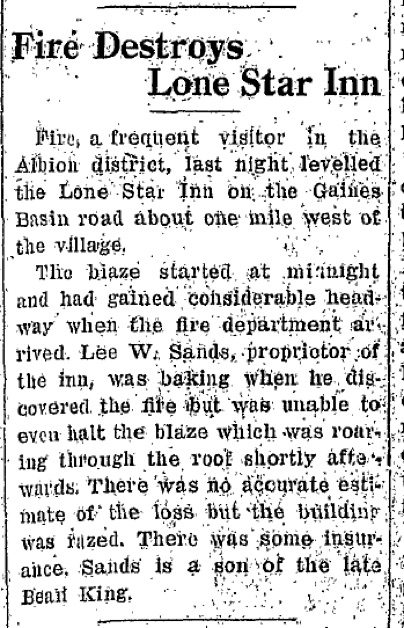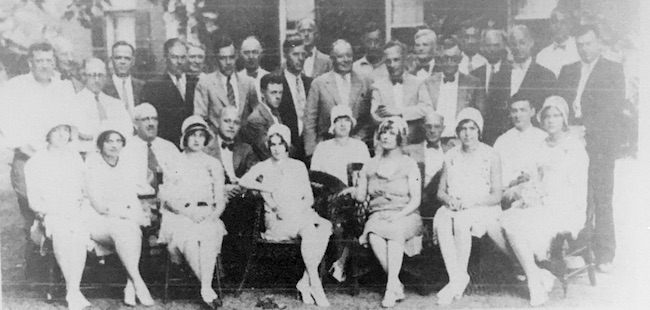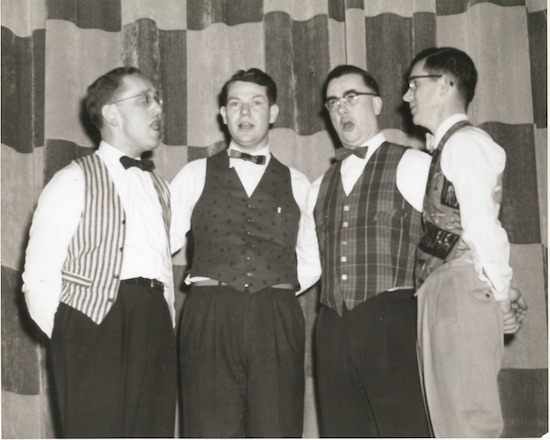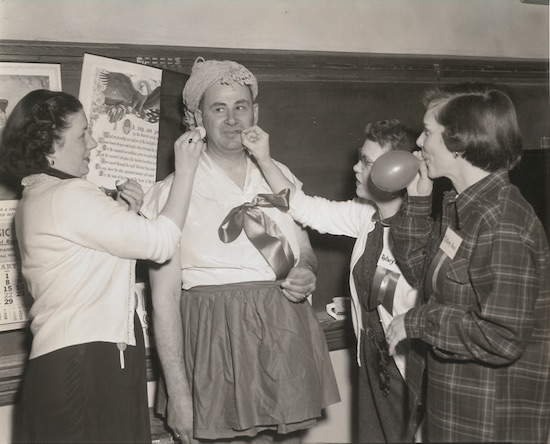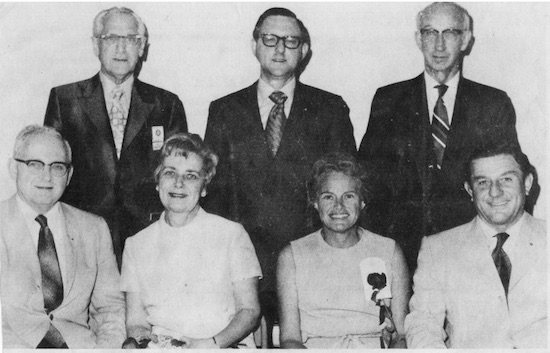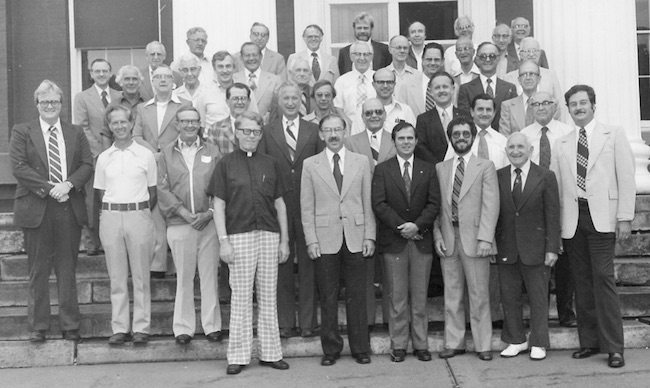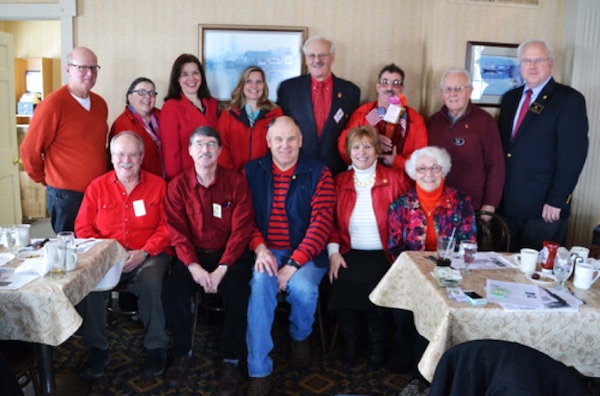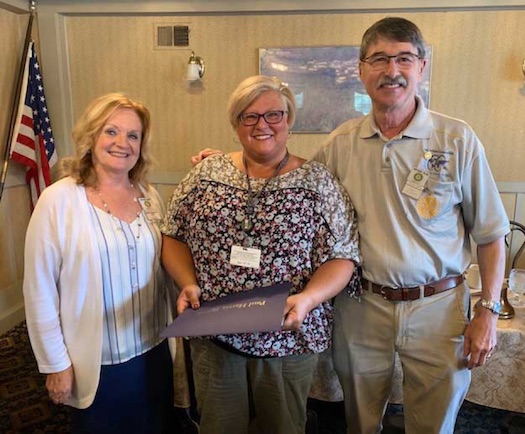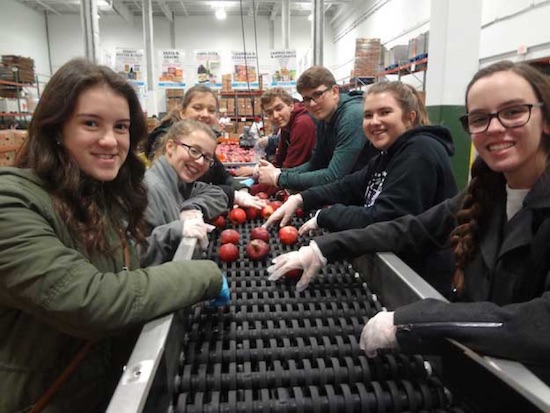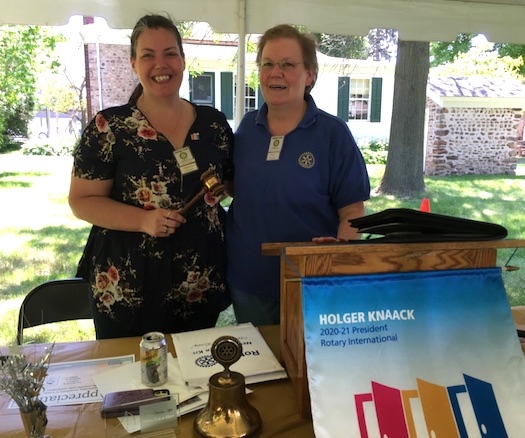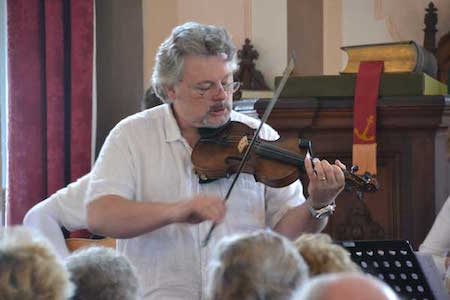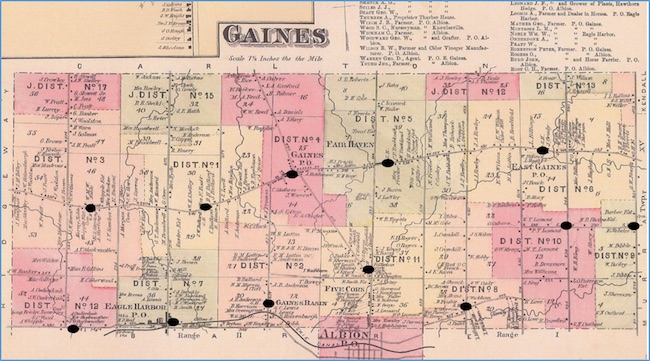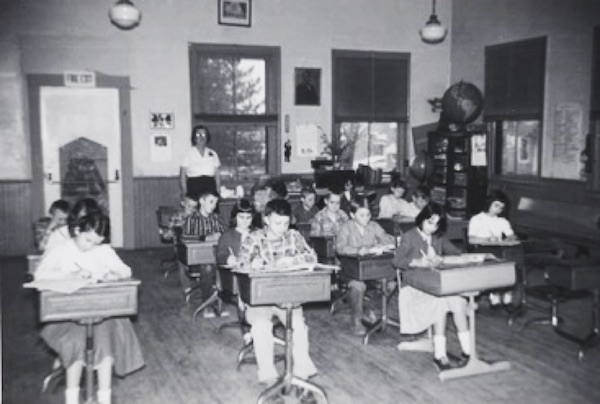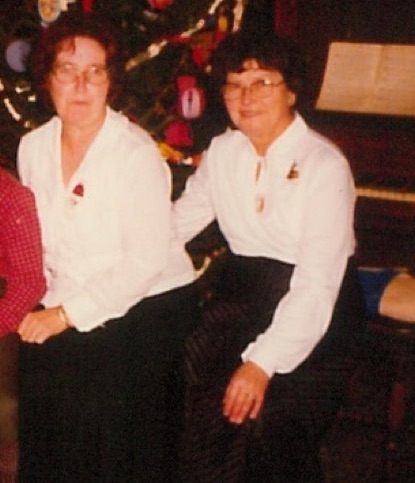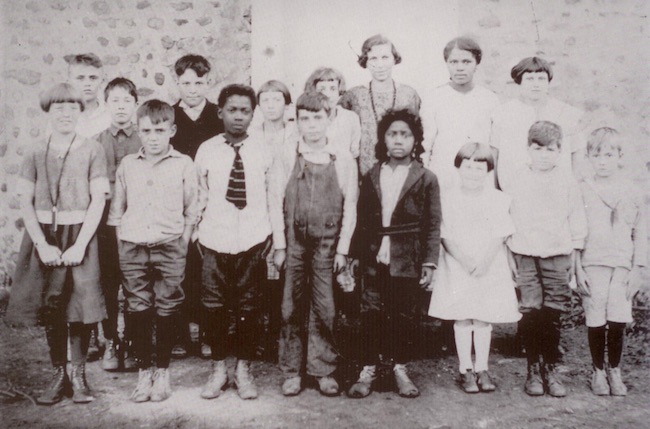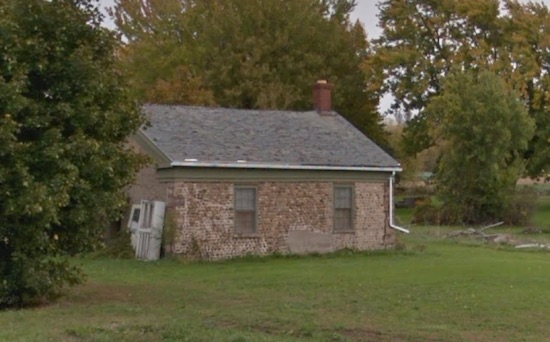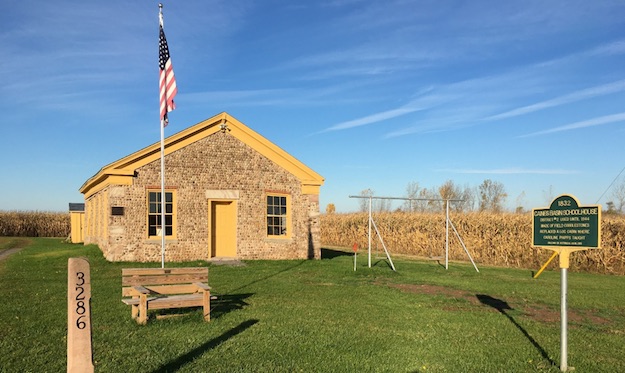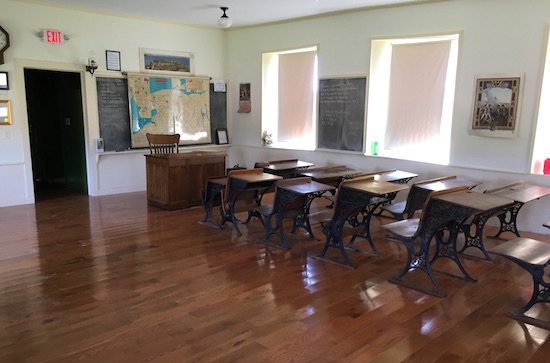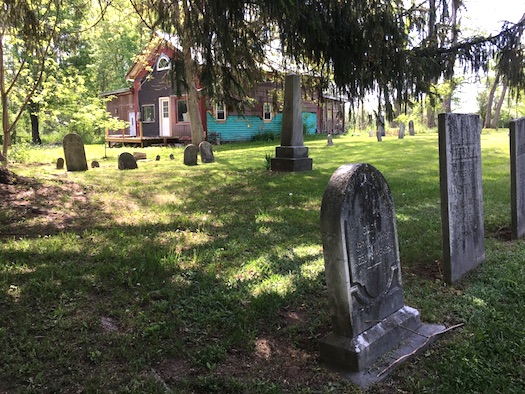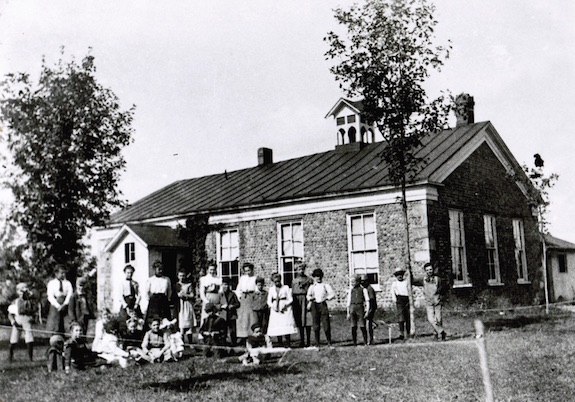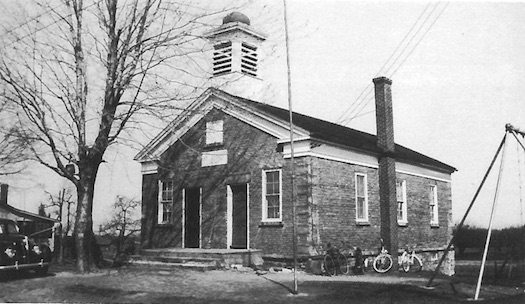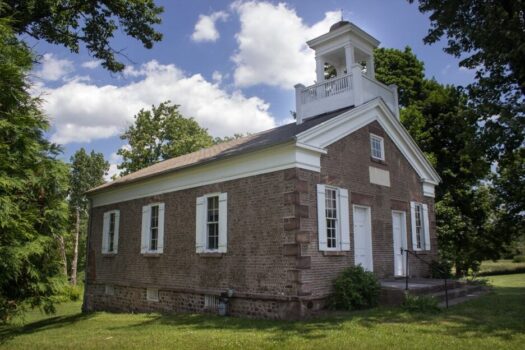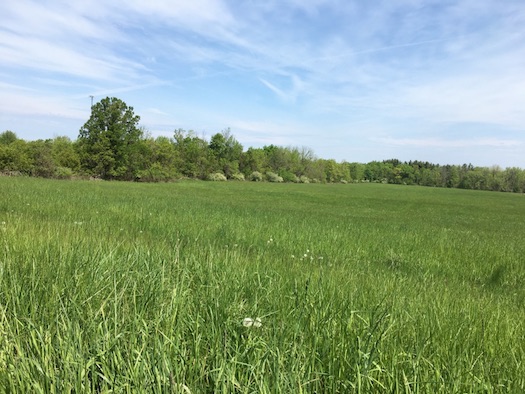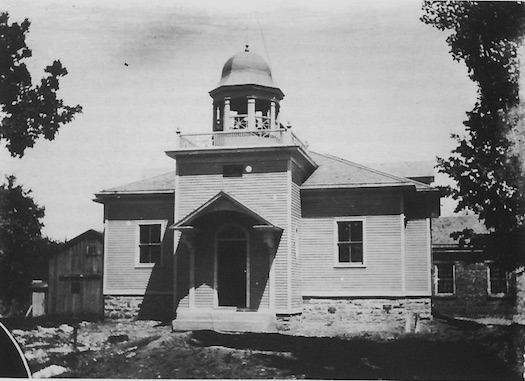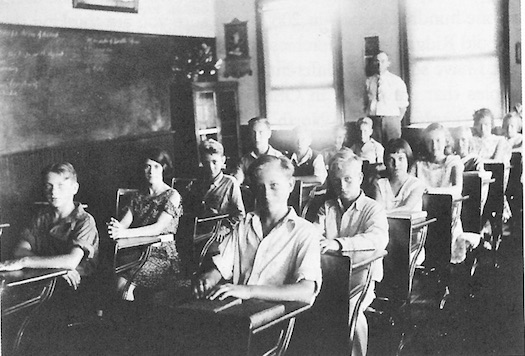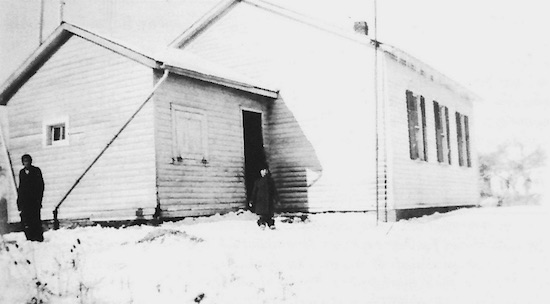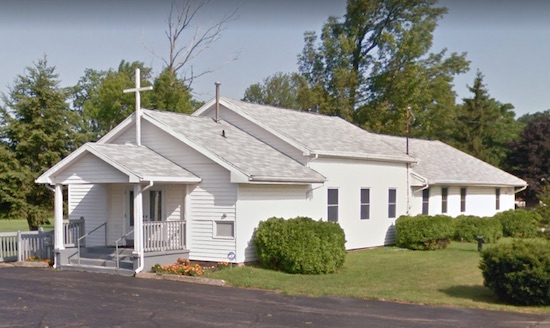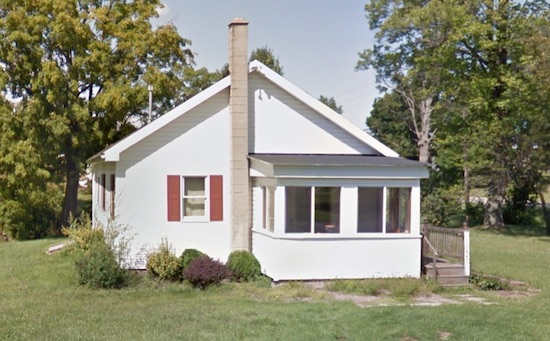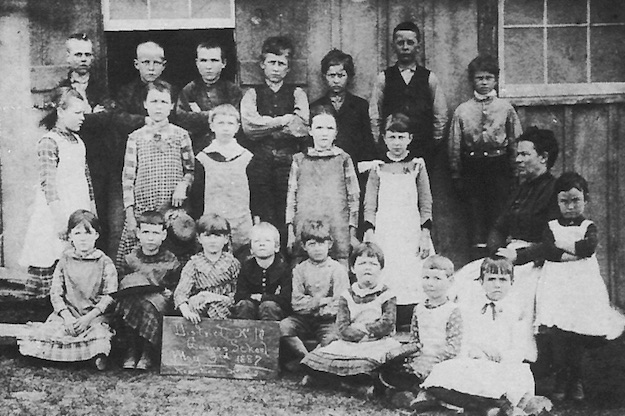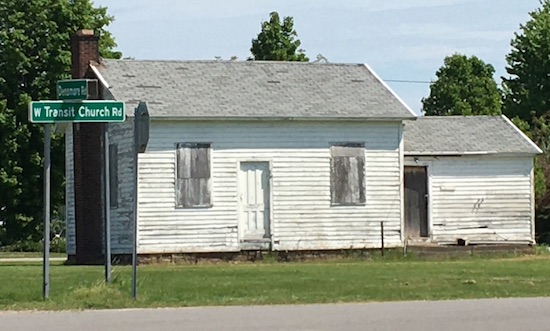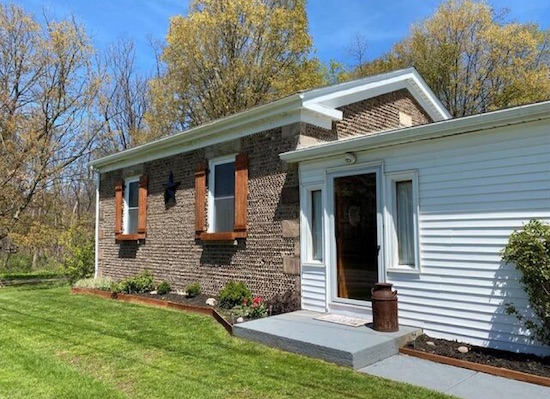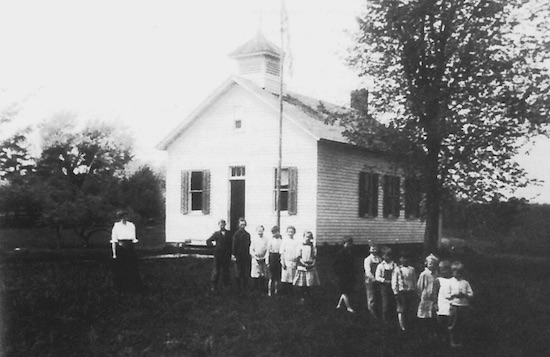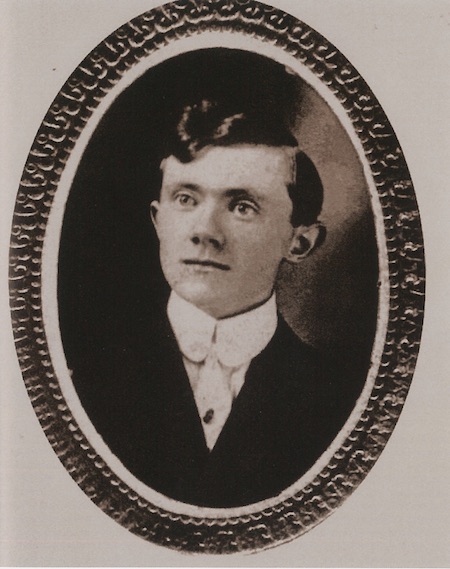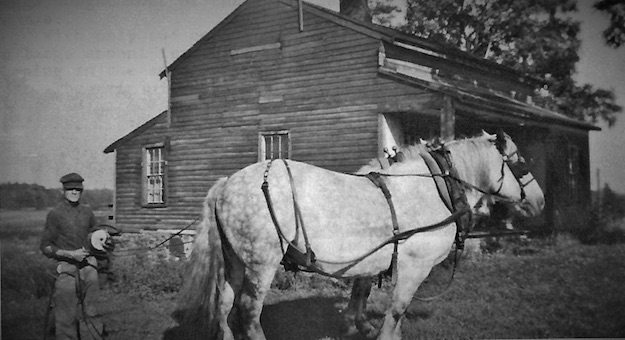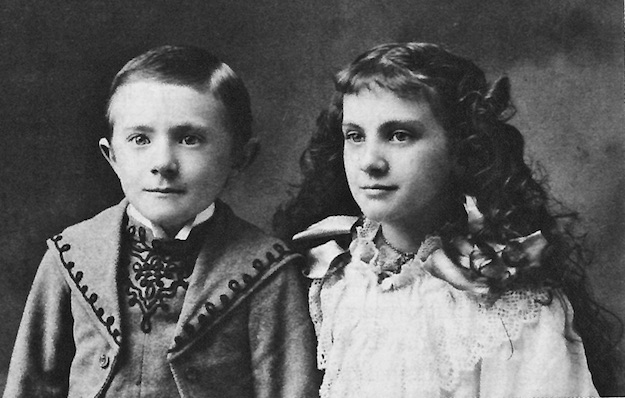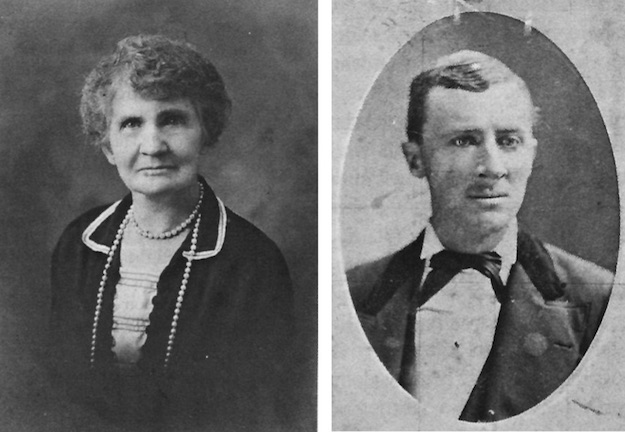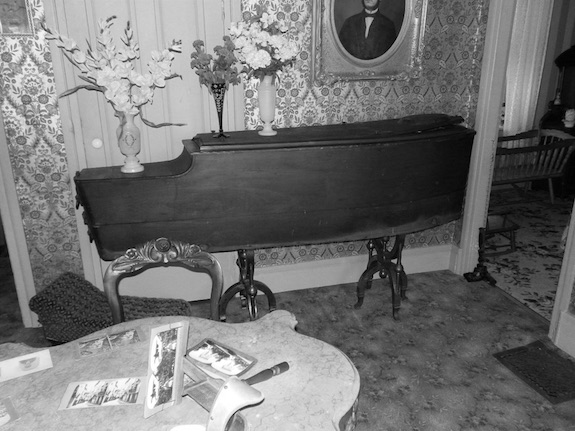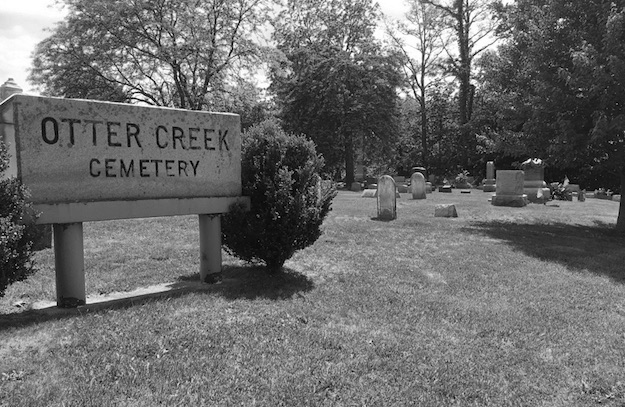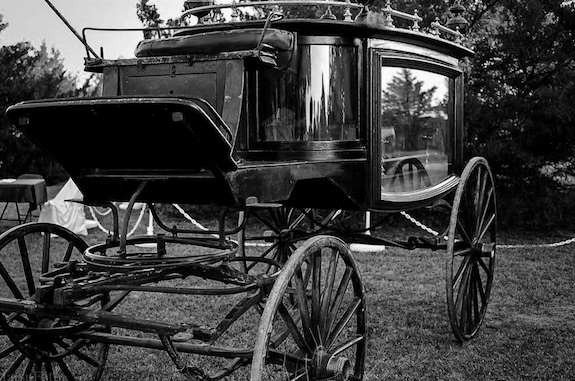Historic Childs: Five Corners, Part 1

1913 New Century Atlas
By Doug Farley, Cobblestone Museum Director – Vol. 2 No. 37
Special thanks to local historian, Delia Robinson for her research and writing about the history of Five Corners, with input from Watt Farm Country Market, still operating at Five Corners.
Just south of the Hamlet of Childs, The Hamlet of Five Corners derives its name from the intersection of three roads: Route 98, Route 279 and Bacon Road.
Route 98 is the original Second Meridian Survey Line of the Holland Land Company. Route 279 essentially follows the original route of the Oak Orchard Road leading from Batavia to Lake Ontario. Bacon Road, running east and west, was named for the family who most influenced the history of that intersection.
Three brothers, all in their early 20’s came from Burlington, Connecticut to the new frontier of the Holland Land Purchase in the early 1800s. They were the sons of Moses and Rosanna (Rust) Bacon. Moses, the first to come, selected 200 acres and worked for the Holland Land Company to help open the Oak Orchard Road. His earnings were applied towards paying for his land. That road today follows Route 98 from Batavia north and continues on Route 279 to Lake Ontario.
In December 1813, the War of 1812 touched the settlers in the area. Moses Bacon was called out with the militia to defend the frontier at Molyneaux Corners Tavern in the Town of Cambria. A historical recounting of the battle follows:
“Many of those who fled the Lewiston area reached the Town of Gaines, roughly thirty miles west of the (Forsyth) tavern, on the same day. Residents of the Town of Gaines recount that the villagers from Lewiston passed through their homes with warnings of an invading army killing and burning everything along the Ridge Road. The residents at Gaines decided not to flee but to muster a militia. It is said that all of the males over 18 living along the Ridge Road were gathered and under the direction of Captain McCarthy they proceeded single file west on the road by early daylight on Friday, December 20, 1813.
“They paused at the home and tavern of the widow Forsyth just before nightfall where the soldiers argued about whether to make camp or continue to the arms stockpile further up the Ridge Road. They came upon the tavern of William Molyneaux (originally that of David Klink) where some British soldiers and their Native allies had burned the barn and taken residence in the log tavern. In the dark, the militia stormed the tavern. Two British soldiers and one Native American were killed in the skirmish and the remainder were taken as prisoners. The militia later turned their prisoners over to the American army as it advanced from the south to scout the charred remains of the settlement at Lewiston. Twenty-one farms were destroyed on the Ridge Road between Lewiston and the Forsyth Tavern. The British continued to dispatch raids of approximately 15 men each throughout the Niagara Frontier to pillage and burn farms. Meanwhile an army of over 1,000 burned the village of Buffalo.”
Moses Bacon served again in September 1814 at the Battle of Fort Erie. During that battle he was shot in the neck and taken prisoner by the British and transported to Halifax, Canada. According to family records, Moses Bacon, while captive, carved a figure out of horse bone, after eating the meat from the bone for survival. He was released at the end of the war in 1815 and returned to his home where he lived out his life.
Moses built the brick house, still extant, at The Corners in 1835, which suffered a destructive fire in more recent years. Moses drew a pension from the government for his service and injuries during the War of 1812.
Moses’ brothers, Elias and Hosea, followed him to Five Corners between 1819 and 1823. Moses sold part of his land to each brother. In those first years, the brothers built a sawmill where they produced timber from the trees felled to clear the land. Elias built a log cabin and barn by the side of the spring just north of the corner. He brought his wife, Sarah, from Connecticut to live in the wilderness. The barn was constructed of logs with a thatched roof in which he kept a cow and a horse. After clearing his land and planting crops, Elias was financially able to build his cobblestone home, still present at Five Corners.
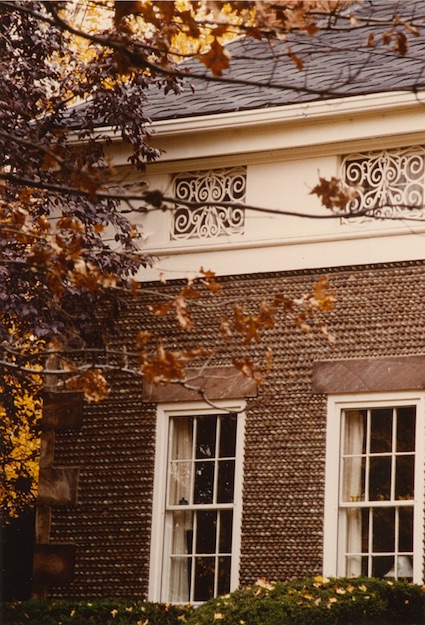
Bacon Home, “Graystone,” Brown Road
Hosea was the youngest brother and first visited the Holland Purchase when he was 19 years old. For four years after he spent summers here with his brothers cutting and sawing timber at the mill and clearing land for planting. He worked at the saw mill until 1828 when he received the deed to his property, located east of Five Corners, on Brown Road. He built a frame house there, which was later replaced with a cobblestone home (shown above) and the farm acquired the name Graystone. It’s quite possible that the wrought iron frieze window works came from the Bacon foundry, about one mile away. Today this beautiful cobblestone home is owned by Susan and Peter Heard.
Education at Five Corners in the early years was conducted in a variety of buildings. Around 1820, school was held just south of The Corners in a log barn that “leaked when it rained.” The next summer, school was held in a log house northwest of The Corners, which was the first house built south of the Ridge Road. The next summer, school was held in a corn crib just south of Five Corners, and from there it went to a horse barn just north of the corner.
By 1824, Moses and Sarah Bacon decided to help in the schooling of the children and deeded a piece of land to be used to build a schoolhouse. A cobblestone schoolhouse was built and serves today as a private residence (shown above) on Route 279, just north of the intersection.
In 1834 Moses Bacon deeded another parcel of land to create a burying ground, which will be the subject of Part 2 of this article. In addition to his community service of providing a cemetery, Moses Bacon was a trustee of the Congregational Church in Gaines in 1824 and contributed financially to the establishment of Phipps Union Seminary on Courthouse Square in Albion. He died in 1848 and was buried in the Union Cemetery that his philanthropy made possible.
Descendants of the Bacon brothers carried on business at Five Corners into the 20th century. Elias Scott Bacon lived in a brick house on the point of the triangle. Elias also built a foundry and manufactured farm implements. His son, Scott E. Bacon, carried on after his father with a foundry and furniture manufacturing business just north of the house. Photo shows structure prior to demolition in 1977.
In the 20th century, nieces of the Bacons inherited the Elias Bacon cobblestone home, where Dr. Ruth (Mary) Neilans, a descendant, now lives.
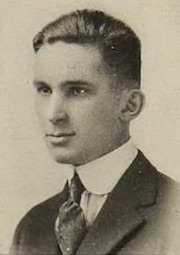
Earl Harding, Cornell University photo, 1920
Earl Harding, also a descendent, grew up in Five Corners in the Moses Bacon home. He attended the Cobblestone School at Five Corners and the Albion High School. Earl went to Cornell University and graduated in 1920.
Over the next 60 years his accomplishments were many for both Gaines and New York State. After serving in the armed forces in WWI and graduating from Cornell, Earl married Marguerite (Hazard) and they had one daughter, Joan (Farnsworth.)
Before his death in 1980 he was president of the NYS Horticultural Society, one of the original Directors and President of the National Cherry Institute, first President of Orleans County Farm Bureau, served 20 years on the Advisory Board of Marine Trust Bank, Chairman of the National Cherry Growers Meeting, Director for six years of the NYS Agricultural Society, appointed by Governor Rockefeller in 1959 to the New York Marketing Order Advisory Board and the Marketing Development Board for Apples. He also served on the Gaines Town Board for 21 years in addition to his service as a Mason, member of the Town Club, Lions Club and Methodist Church.
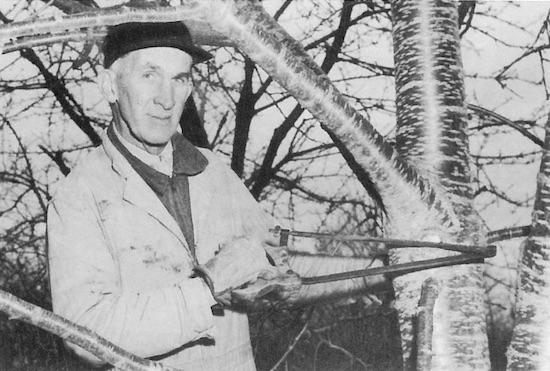
Earl Harding in his cherry Orchard at Five Corners, 1956



















